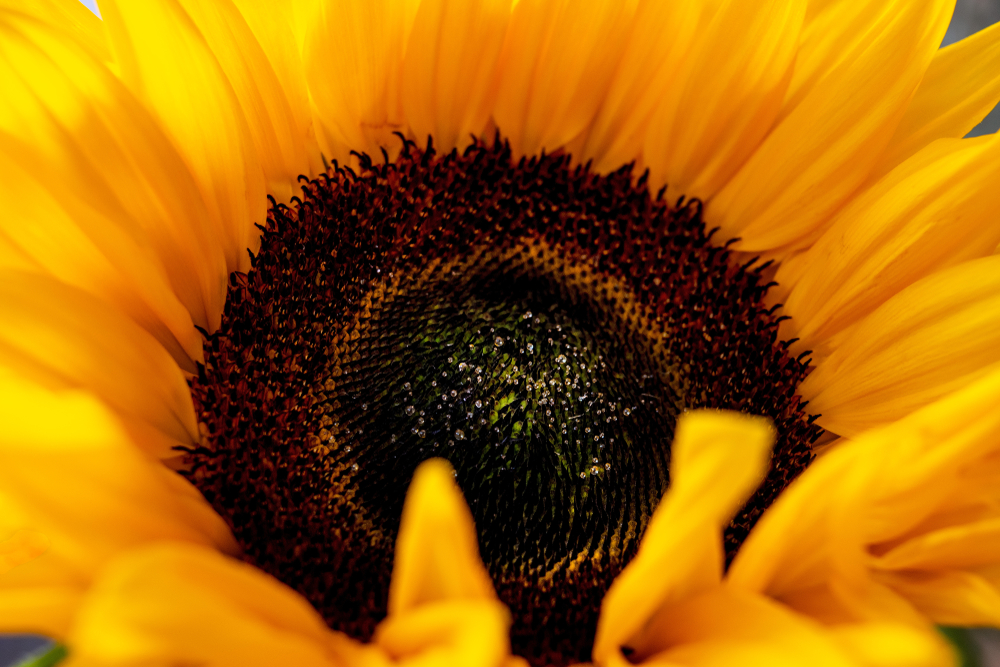Garden Goals: Exploring Stunning Botanical Wonders
Friday 11 April 2025

No matter the size of your garden at home, there is always inspiration to be drawn from the world’s famous gardens, each a testament to human creativity and nature’s beauty. These horticultural masterpieces offer a tapestry of colours, textures and scents to fire up the imagination. Each visit offers a journey of discovery, where seeds of inspiration are sown and nurtured, enriching your own gardening adventures with the beauty of global botanical diversity.
Madeira

An autonomous region of Portugal, Madeira is a paradise for gardening enthusiasts, boasting a rich history intertwined with horticulture. Its mild subtropical climate, influenced by the Gulf Stream, fosters a diverse array of flora from around the world. Discovered in 1419 by Portuguese explorers, its volcanic origins contribute to its dramatic landscape characterised by steep cliffs, lush forests and fertile valleys.
Initially uninhabited, settlers from Portugal began colonisation in the early 15th century, cultivating sugar cane, wine grapes and other crops on the island’s terraced slopes. Since the 15th century, settlers introduced exotic plants to the island, creating botanical gardens and lush landscapes. The island’s volcanic soil and varying topography offer ideal conditions for a wide range of plants to thrive, from vibrant flowers to towering trees.
Madeira’s botanical heritage is celebrated in its numerous gardens, such as the Monte Palace Tropical Garden and the Botanical Garden of Madeira, which showcase an impressive collection of indigenous and exotic species. Additionally, the annual Flower Festival attracts visitors with its colourful displays and floral-themed events.
Rio de Janeiro Botanical Garden, Brazil
These gardens offer breathtaking beauty, rich biodiversity and historical significance. Established in 1808 by Dom João VI, the garden spans 140 hectares and is home to more than 6,500 species of plants, including rare and endangered specimens.
As you wander through the garden’s lush pathways, you’ll encounter towering palm trees, majestic imperial palms, vibrant orchids and exotic Amazonian flora. The garden’s centrepiece is the iconic Avenue of Royal Palms, a majestic row of palms that leads to the grand entrance.
The garden also boasts architectural marvels, such as the Crystal Palace, a stunning glasshouse inspired by London’s Crystal Palace and the Botanical Museum, which houses an impressive collection of botanical specimens and artefacts. Another highlight is the Amazon Rainforest section, an area dedicated to showcasing the biodiversity of the Amazon Rainforest, with a diverse range of plant species from this iconic ecosystem such as the giant lilypads (Victoria amazonica).
Keukenhof Gardens, The Netherlands

Next up is the Keukenhof Gardens, an iconic destination that epitomises the Netherlands’ love affair with flowers, which can be reached from Amsterdam, Rotterdam and Ijmuiden.
The history of Keukenhof dates back to the 15th century when the area served as a hunting ground and source of herbs for Jacqueline, Countess of Hainaut. The name “Keukenhof” translates to “Kitchen Garden” in English, reflecting its original purpose. In 1949, the mayor of Lisse, a town in the Netherlands known for its flower fields, along with a group of leading flower bulb growers and exporters, established Keukenhof Gardens. Their goal was to create a showcase for Dutch flower bulb growers, highlighting the country’s expertise in horticulture and promoting the export of flower bulbs. The first exhibition opened its gates to the public in 1950.
Today Keukenhof, also known as the “Garden of Europe”, showcases more than seven million tulips, daffodils, hyacinths and other bulb flowers in a riot of colours and fragrances. Spanning 79 acres, the meticulously landscaped gardens offer a breathtaking spectacle of blooms arranged in intricate patterns and thematic displays. Open from mid-March to mid-May, visitors can explore themed pavilions, attend flower arranging demonstrations and learn about the latest gardening trends.
Jardin Majorelle, Marrakech, Morocco
Bold, bright and lively, Marrakech is a feast for the senses. When you’re ready to take things down a notch, head to Jardin Majorelle, a botanical oasis that captivates visitors with its serene atmosphere and diverse array of plants. Designed by the French artist Jacques Majorelle in the 1920s and later restored by fashion designer Yves Saint Laurent and his partner Pierre Bergé, the garden is a masterpiece of artistry and botanical curation.
One of the highlights is its striking cobalt blue buildings juxtaposed against the lush greenery and vibrant blooms. The garden features a stunning collection of exotic plants from around the world, including towering palms, bamboo groves, cacti and succulents. Wander through shady alleys, past tranquil ponds and under intricate pergolas adorned with bougainvillea and jasmine.
The garden’s meticulous design and careful selection of plants create a harmonious blend of colours and textures that delight the senses. Whether you’re a botany enthusiast, a lover of art and design, or simply seeking a peaceful escape from the hustle and bustle of Marrakech, Jardin Majorelle offers a rejuvenating experience that celebrates the beauty of nature and human creativity.
Royal Botanic Gardens, Kew, London, UK

Much closer to home, it’s worth mentioning that we have one of the world’s most renowned botanical gardens. Kew Gardens, located in south-west London, spans more than 300 acres and is home to a diverse collection of plants from around the globe, including rare and endangered species.
Inside you will find Temperate House, the largest Victorian glasshouse in the world. Step inside this architectural marvel and discover a diverse collection of plants from temperate regions. Admire the intricate plant displays and architectural details of this historic structure. The Waterlily House is home to stunning aquatic plants and be sure to stroll through the Rhododendron Dell to admire vibrant blooms, then wander along the Tree-Top Walkway for a bird’s-eye view of the canopy. Wind down your day by taking a leisurely stroll through the tranquil landscapes of the Arboretum or along the peaceful pathways of the Japanese Garden.
Kew Gardens also plays a crucial role in scientific research and conservation efforts, making it both a cultural attraction and a centre for botanical study.
Discover more articles, expert guides, and travel inspiration by exploring our blog. Whether you're looking for destination highlights or unique travel experiences, you'll find plenty of insights to spark your curiosity.


